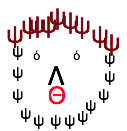
I think I can safely say that nobody understands quantum mechanics. Richard Feynmann.

|
I think I can safely say that nobody understands quantum mechanics. Richard Feynmann. |
| Since the electron behaves as a wave, can do a Young's slits type experiment, and get usual 2 slit interference pattern: |  |
| This shows how it actually builds up in practice |
| Suppose we close off one slit: | 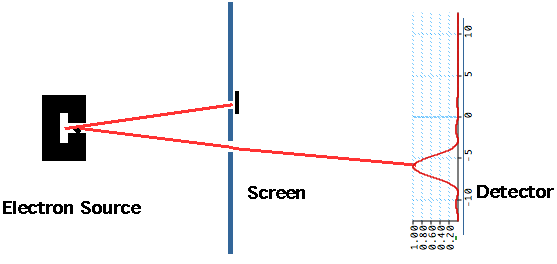 |
| Suppose we close the other slit: |  |
| Note when we add together two one slit patterns, we do not get two-slit patterns. | 




|
There was a young man who said "God
Must think it exceedingly odd
That this tree
Continues to be
When there's no one about in the Quad"
| slow electron is always reflected (low energy)
fast electron always goes over (high energy) |
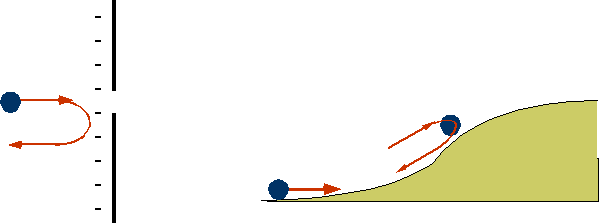 |
| Waves do not behave like this: they get partially reflected (remember what happens to light hitting glass). | 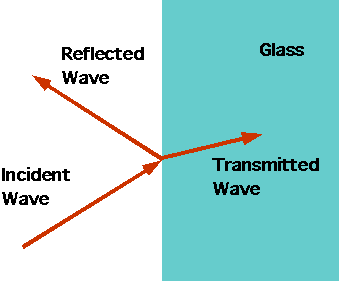 |
| If electron is literally the wave, | 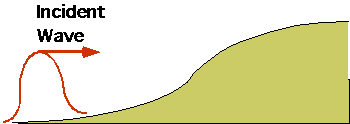 |
| this would imply we see 1/2 electrons | 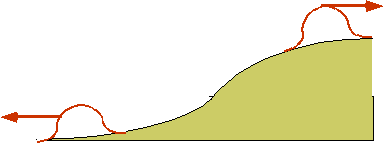 |
| e.g. for the electron in a box, in the first excited state | 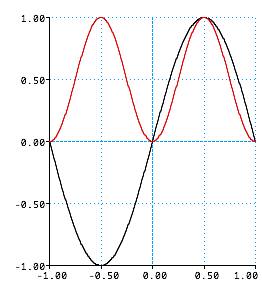 |
Probs must add to 1: P₁ = prob. that electron hits detector 1: P₂
= prob. that electron hits detector 2P₁ + P₂ = 1 |
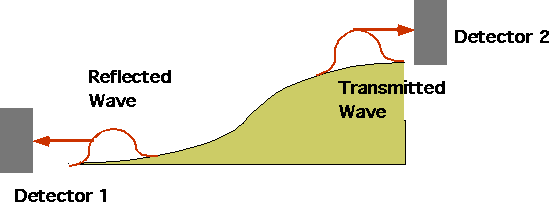 |
x
C
| e.g a H atom in the first excited state (n = 2)will decay to the ground (n = 1) state in about 10-10 s. and emits a photon | 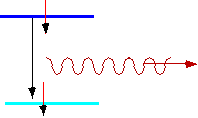 |
| Initially it is almost all the upper state |  |
| After some time it's a 50-50 mixture |  |
| Finally it is almost all the lower state |  |
| By measuring the atom, we can decide which of the two states it is in |  |
| e.g. consider light going through 2 sheets of polaroid at 90°. | 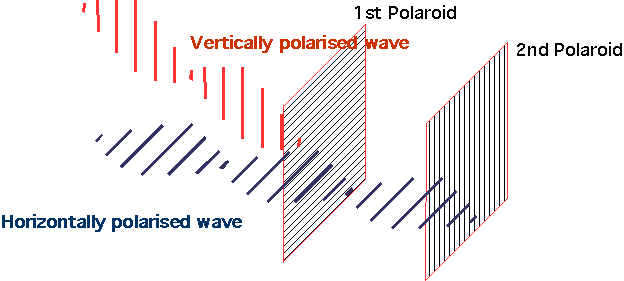 |
|
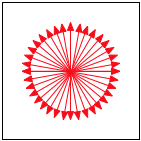


|
| Now insert a third sheet at 45° between the two | 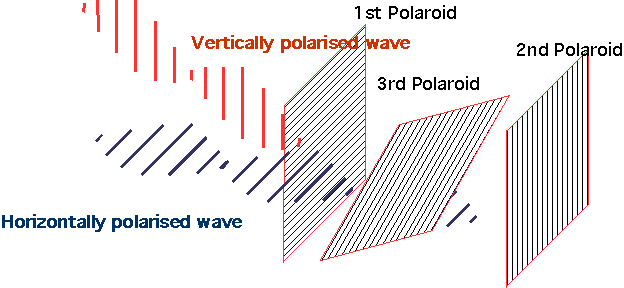 |



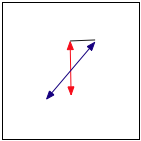
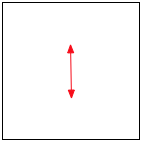
They said, "You have a blue guitar,
You do not play things as they are."
The man replied "Things as they are
Are changed upon the blue guitar."
Wallace Stevens
| E.g. go back to our wave function example: |  |
| This seemed to say that the electron gets split in half, but we interpreted it as a probability. |  |
| We can have a particle with no spin which decays into 2 particles with spin | 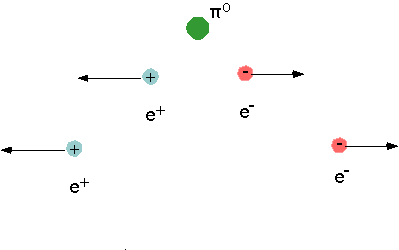 |
| There are two possibilities for the way the spins can arrange themselves: up-down |  |
| There are two possibilities for the way the spins can arrange themselves: down-up |  |
| Quantum Mechanic It is indeterminate until you measure them |  |
God does not play dice. Einstein
| The trivial version: you have a box, with a lid: when it is opened, cyanide gas is released. |  |
| The sophisticated version: you have a box, with a lid and a single radioactive atom: when the atom decays, cyanide gas is released. |  |
God not only plays dice, but throws them where they cannot be seen. Hawking
| EPR thought the states must be separate |  |
| They are actually one "entangled" state | 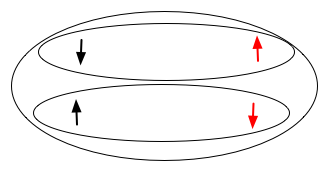 |
| and a measurement destroys it: e.g. | 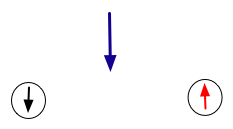 |
or the "watched pot effect":
Quantum mechanics is correct, and there is no "simpler" system
Reality is even uglier than we thought: e.g.
| Many-worlds theory: every time a measurement is made, the universe subdivides into separate universes that correspond to every possible outcome of the theory | 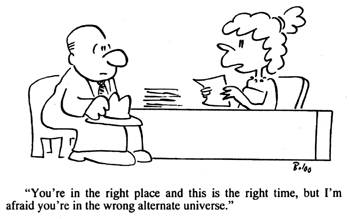 |
What might have been is an abstraction
Remaining a perpetual possibility
Only in a world of speculation.
What might have been and what has been
Point to one end, which is always present.
Footfalls echo in the memory
Down the passage which we did not take
Towards the door we never opened
Into the rose-garden.
T. S. Eliot (Burnt Norton)
I can only say, there we have been: but I cannot say where.
And I cannot say, how long, for that is to place it in time.
T. S. Eliot (Burnt Norton)